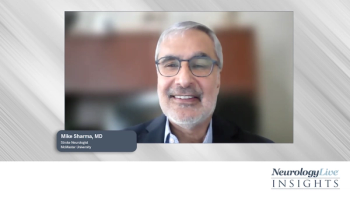
Combination of AI, MRI Can Predict Alzheimer Disease Risk
Artificial intelligence unlocks new potential to expand neuroimaging tools and techniques available for disease detection and prevention.
This article
A combination of artificial intelligence (AI) and brain magnetic resonance imaging (MRI) scans were shown to predict a patient's risk level for developing
The risk assessment also included other, non-imaging factors, such as gender, age, and cognitive test scores. Results were published in the journal Brain.
A Boston University team, led by Shangran Qui, Prajakta Joshi, Matthew Miller, and Chonghua Zue, used the Alzheimer’s Disease Neuroimaging Initiative (ADNI) to teach a deep-learning algorithm. Based on performance, not only did they determine the model was substantially accurate on three distinct datasets, but they also found that it performed better than neuroradiologists.
“This framework provides a clinically adaptable strategy for using routinely available imaging techniques, such as MRI to generate nuanced neuroimaging signatures for Alzheimer’s disease diagnosis, as well as a generalizable approach for linking deep learning to pathophysiological processes in human disease,” the team wrote.
READ MORE:
The team used scans from 414 patients who had been diagnosed with Alzheimer’s, as well as control patients from the ADNI. By analyzing T1-weighted brain MRI images, the fully convolutional neural network can generates color-coded disease probability maps, and a multi-layer perceptron evaluates those maps in order to create a binary Alzheimer’s disease status classification.
Investigators assessed their model on the ADNI dataset. They also did so on three independent patient groups — 382 patients from the Australian Imaging, Biomarker, and Lifestyle Flagship Study of Aging, 102 patients from the Framingham Heart Study, and 582 individuals from the National Alzheimer’s Coordinating Center.
According to their results analysis, the team determined the most effective and accurate model also included evaluations based on a patient’s gender, age, and score on the Mini-Mental State Examination. Compared to the evaluation results of 11 neuroradiologists who read 80 randomly chosen ADNI scans, the investigator’s model performed better, producing an area under the curve of 0.996 compared to the neuroradiologists’ 0.920. Additionally, the model was also highly accurate in identifying high-risk cerebral regions.
Additional testing is needed to validate whether this model can be used to improve clinical care and outcomes, the team wrote, but it has the potential to expand neuroimaging tools and techniques available for disease detection and prevention.
Newsletter
Keep your finger on the pulse of neurology—subscribe to NeurologyLive for expert interviews, new data, and breakthrough treatment updates.


































